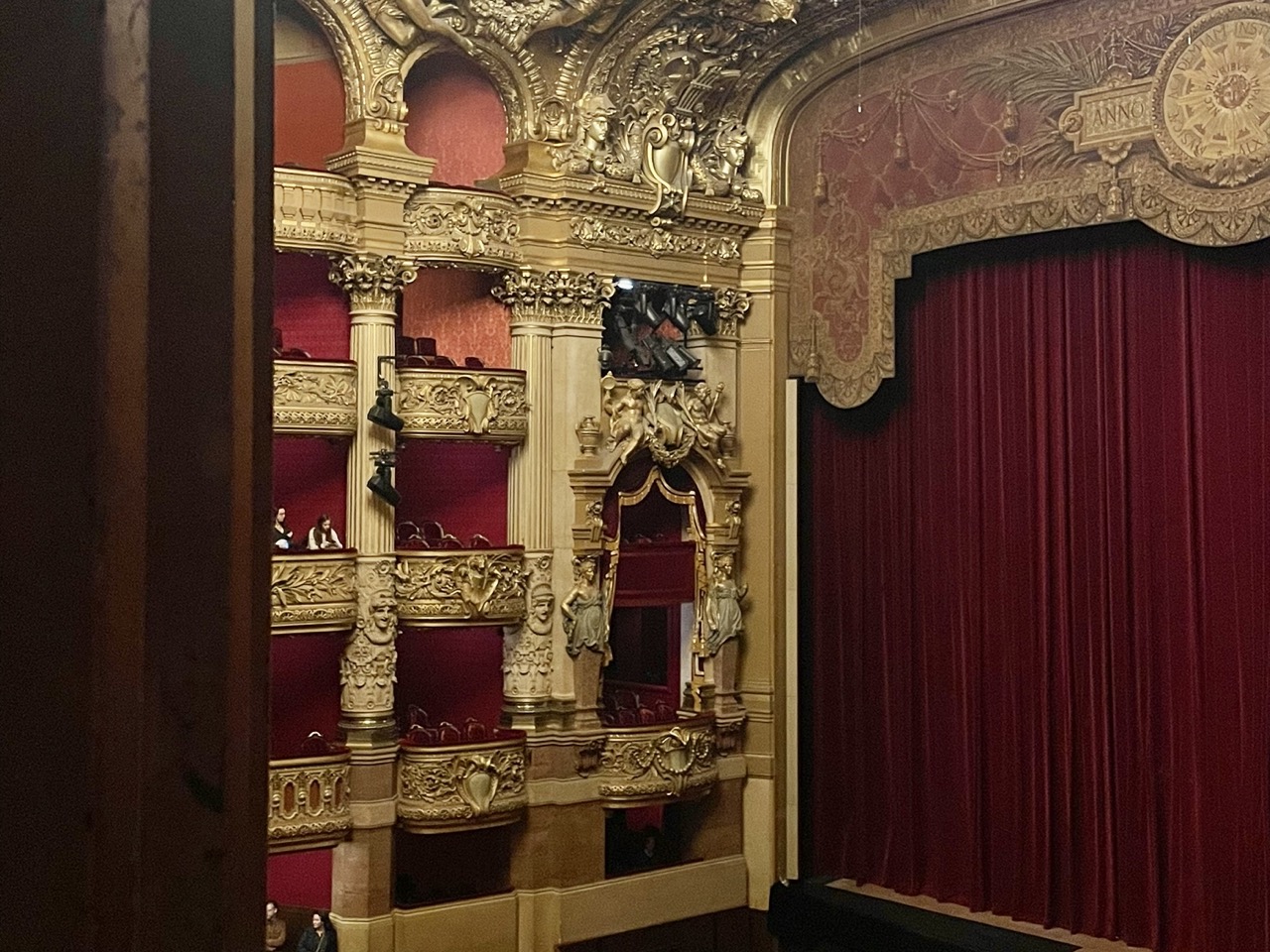A Night at the Opéra

When I asked some AUP students their thoughts on opera, they helped confirm that opera as an art form finds it hard to appeal to youth. “Nowadays there are a lot of ways of entertaining oneself. Young people are more inclined to go to the cinema, or concerts, whereas going to the opera is usually perceived as archaic by our generation,” said Modė Cirtautaitė, a sophomore at AUP. There are also difficulties to access opera in many parts of the world. “Growing up in Panama, opera was never something common, compared to other forms of entertainment”, sophomore Leonor Feigenblatt said. “I have no knowledge about opera because it was never part of my environment, there was a lack of access. I perceived it as a very European, upper-class activity and I believe I would need previous knowledge to actually enjoy one”.
Paris is, as with virtually every other art form, at the very center of opera. As both venue and inspiration for many of the most revered examples of the art, the French capital has a reputation for showing excellent operas, hosting acclaimed theaters and developing some of the world’s most exciting seasons. Parisians have an access to opera that many of its admirers around the world could only dream of.
With several performances every week and an incredibly diverse program, the Opéra Nationale de Paris is a leading world player in the art form. In fact, its original building, the Palais Garnier, is one of the city’s most cherished sites, visited by 850,000 tourists a year because of its thrilling history and architecture. The problem is, that despite the numbers, those visitors do not really go beyond the doors of the hall, refusing to delve into the room where the magic truly happens. Opera is unique in that it is a mix of many different arts: music, of course, but also poetry, acting and all the visual arts that are involved within the set design. Despite these distinctly peculiar characteristics, more often than not one gets the sense that interest in opera is decreasing at worrying levels. This is far from being a contemporary issue: theaters and opera houses have been concerned about the future of the art for decades, especially concerning younger audiences.
The main staircase at the Palais Garnier is one of the building's main attractions. Image credit: Pablo Monfort MillánTheaters around the world know this all too well, and efforts are being made to change opera’s negative misconceptions. The Paris Opéra has, over the years, developed numerous initiatives to draw the attention of audiences of all types, trying to tackle these stereotypes of opera as a boring, elitist and old-fashioned art. Take their youth program, for instance. The AROP (Association pour le Rayonnement de l’Opéra de Paris), basically the official “friends of the opera” organization, is open to everyone. Pay an annual fee and get some amazing discounts over ticket prices as well as invitations to special events—such as rehearsals and avant-premieres. This program is especially beneficial to people under thirty, because the annual fee is extremely reduced (the normal fee is 150€, the youth fee is 30€), and there are even more events that one can attend, most significantly the “young” avant-premieres, which makes the whole thing even more attractive for students like us.
I joined the AROP as soon as I arrived in Paris last semester, and immediately began taking advantage of its opportunities. I have had a passion for opera for years, but I knew in this city I would really be able to foster my love for the art. So, after joining with the reduced youth fee, I went on their website and started getting to know the kind of events that were offered. Among a wide array of meetings with artists, avant-premieres and conferences, as well as reduced prices for regular performances, what particularly caught my attention were the “répétitions” — rehearsals of future productions. Rehearsals are events that one can attend without paying anything (there are limited spots, though) and although they do not showcase a finalized, perfected opera, they are a great way of approaching them in informal, relaxed environments. It is very interesting, too, to appreciate how it all comes together, as the orchestra conductor makes comments to the actors, the set-designers give instructions to side characters and the props are moved around the scene.
The view from one of the theatre's boxes (I got assigned this typically expensive seat with a huge reduction thanks to the youth program). Image credit: Pablo Monfort MillánThere are few moments that could rightfully challenge the feeling when an opera performance comes to and end, hitting its final chord. The lingering sound of some awe-inspiring music, the ecstatic, sudden burst of applause, the tears in one’s eyes as the plot ultimately resolves (or doesn’t); it makes for an utterly magical experience, for opera has the unparalleled power of captivating almost all our senses at once, with the extra thrill of it being a live art form.
An argument could be made that one of the purposes of art is to impress and enthrall spectators, to leave a mark in them. In that sense, opera —commonly regarded as the most complex art form humans have ever developed— should be perceived, admired and, more significantly, attended by far larger audiences throughout the world. If you have heard or seen ads about opera, and have always wanted to try it out, the AROP youth program is a great way to start to get to know this mesmerizing art. Easy to access, with a reduced price range, and the admired reputation of the Opéra Nationale, if you are a student in Paris you have at the tip of your fingers a whole new art form to explore.
There is also the other Opéra building, the Opéra Bastille. In this picture, a production of the Swan Lake was about to begin. Image credit: Pablo Monfort Millán









